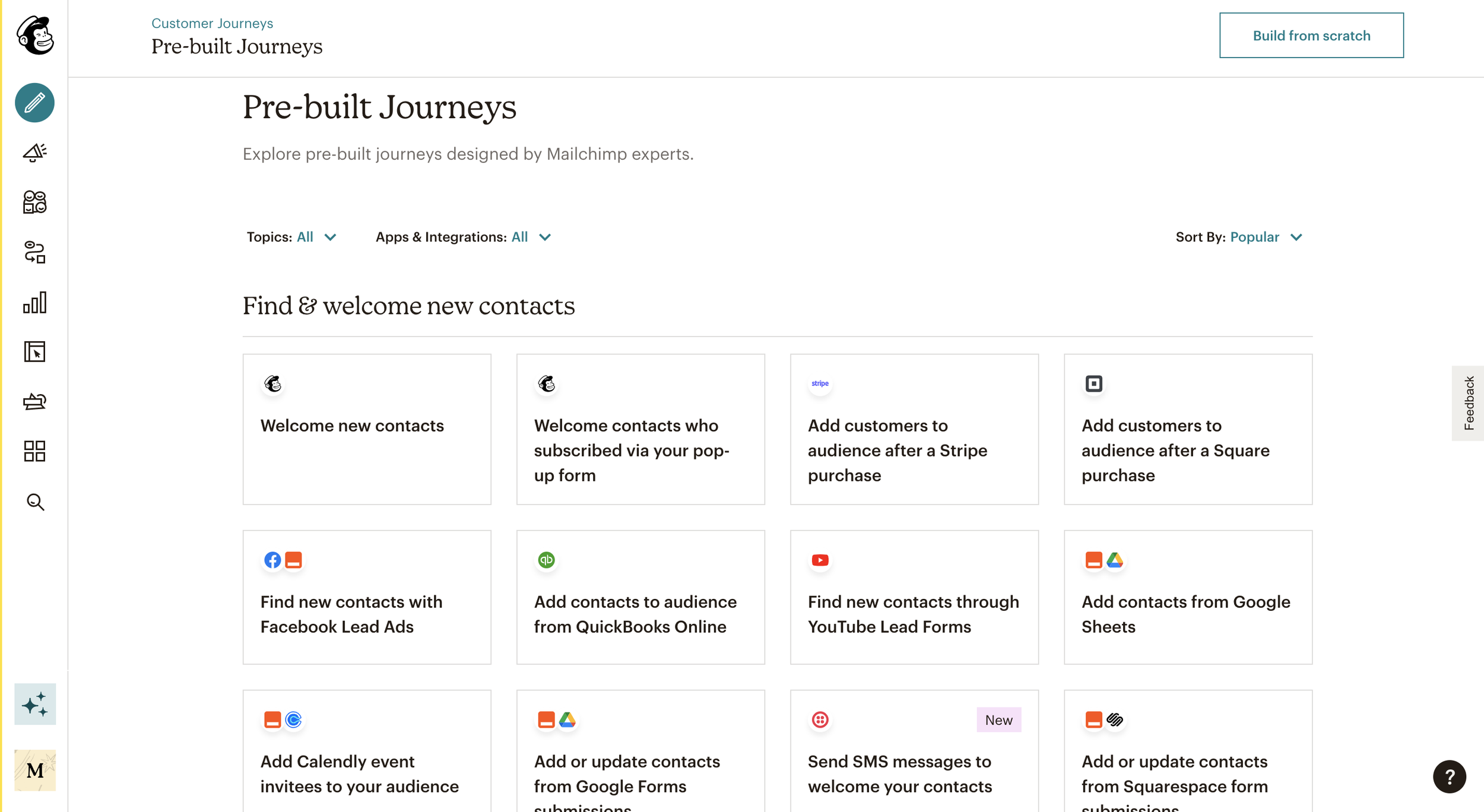Mailchimp: Automations
My role:
Content Designer
The context
Mailchimp’s Pre‑Built Journeys were designed to help users launch automations faster, but the library was limited (around 10 journeys) and under-utilized. The templates didn’t reflect the full power of the automations builder (called Customer Journey Builder) or the growing list of integrations Mailchimp supported.
I joined the Pre‑Built Journeys squad to help scale the automation library and make it more useful, trustworthy, and easier to navigate without sacrificing clarity or consistency.
My process
1) Mapped gaps & surfaced needs
I audited the existing journeys and met with PMs, researchers, and support to understand where the experience was falling short. Key gaps included:
Templates that didn’t reflect common use cases or newer builder capabilities
Inconsistent naming and structure that made journeys hard to scan or trust
A lack of standards for how journeys were authored and maintained
This shaped our strategy: expand coverage, improve clarity, and build the system behind the content.
2) Standardized the journey model
To scale well, we needed more than better copy: we needed reusable patterns. I worked with a staff content designer to define shared standards for:
Journey naming and summaries
Email content and subject lines
Metadata (tags, categories, integration flags)
Tone, terminology, and voice guidelines
These standards helped us move faster, stay consistent, and create content that better reflected user needs.
3) Wrote and iterated on 40+ journeys
Each journey needed to do a lot with a little: clearly communicate what it does, why it's useful, and how to get started, all in a few lines. I collaborated with product, marketing, and design to get each one right, iterating on copy and logic to ensure clarity and usefulness.
What changed
The automation library scaled from 10 to 60+ journeys with more consistency, quality, and coverage across key use cases
Internal teams used the standards I created to keep building without reinventing the wheel
I flagged gaps in taxonomy and category structure that were added to the roadmap for better discoverability
Feedback from teams (and early usage trends) showed users were more confident selecting and launching journeys
Why this work mattered
This wasn’t just a content clean-up—it was a shift toward content as infrastructure. By creating a scalable system for how journeys are written and understood, I helped make automation more accessible for more users and gave the team a foundation they could keep building on.




